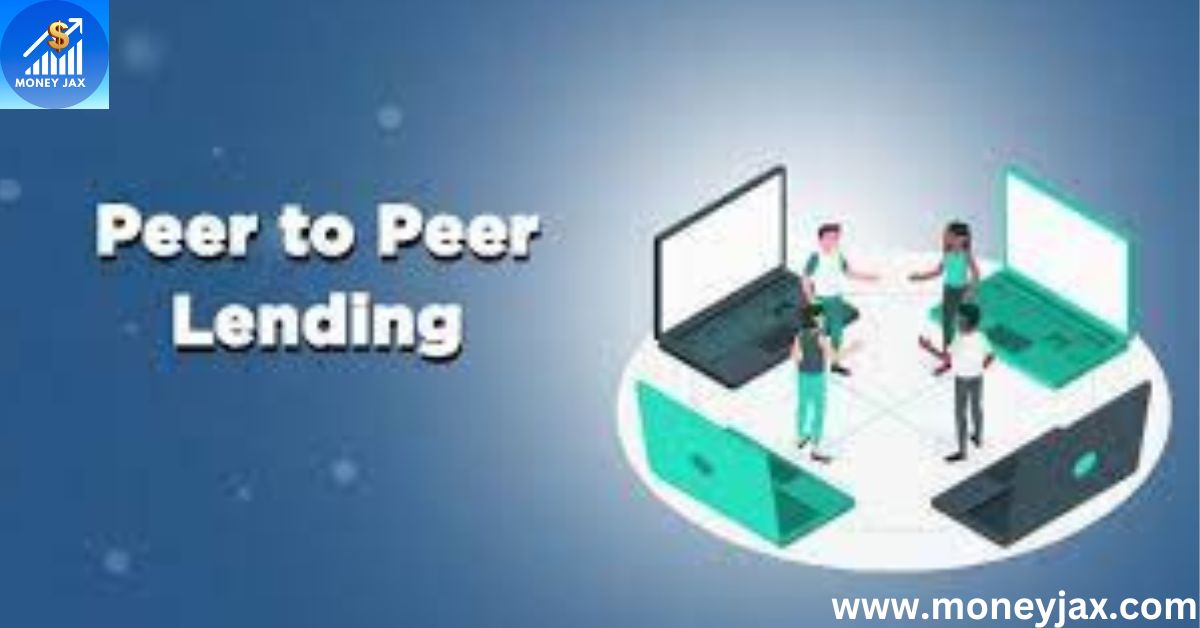Also called P2P lending, Peer-to-peer lending is the practice of lending money. The money can be blended to any individual or any business through online services that match lenders with borrowers. These services are offered mostly online providing more cheap services than traditional financial institutions.
With peer-to-peer lending, lenders can earn higher returns as compared to the savings and investment products offered by the banks. On the other hand, borrowers can borrow money at lower interest rates.
Understanding Peer-to-peer lending
Fundraising through Peer-to-peer lending promotes charity and encourages supporters of a charity or non-profit organization (NPO) on how to raise money individually. It comes under the category of crowdfunding.
It is not necessary to have a single crowdfunding page where everybody donates, people can have multiple individual pages for the same. Peer-to-peer fundraising allows individual people to share fundraising pages with their own networks.
Crowdlending or peer-to-peer loans are unsecured personal loans most amount of which are lent to businesses. Luxury assets that include jewelry, watches, buildings, fine arts, etc. are offered in the form of secured loans while other business assets are as collateral. These are made for individuals, companies, or charities. Peer-to-peer lending also includes student loans, commercial and real estate loans, payday loans, secured business loans, factoring and leasing.
Characteristics of peer-to-peer lending
The three traditional financial institutions which are deposit takers, investors, and insurers do not completely include peer-to-peer lending. However, P2P is often categorized as an alternative financial service.
The characteristics of peer-to-peer lending include:
- Conducted for profit sometimes.
- Intermediated by a peer-to-peer lending company.
- Only supports online transactions.
- lenders and borrowers do not necessarily have a prior relationship.
- The loans are not usually protected by government insurance.
- The loans can be unsecured or secured.
- Peer-to-peer lending platforms can also allow you to choose between the borrowers you want to invest in.
- Social media and social networks are responsible for the marketing of peer-to-peer lending.
- Not all peer-to-peer lending platforms provide transfer facilities. Loans are securities that one can transfer to others either for debt collection or profit.
Services offered by peer-to-peer lending
The emergence of the Internet and e-commerce has made a huge difference in doing away with traditional financial institutions. The introduction of new intermediaries has proven to be time and cost-saving.
Services provided by the peer-to-peer intermediaries are:
- Finding marketing lenders and borrowers.
- Legal compliance and reporting.
- The online investment platform enables borrowers to attract lenders and investors to identify and purchase loans that meet their criteria.
- Development of credit models for loan approvals and pricing.
- Verifying borrower identity, bank account, employment and income.
- Performing borrower credit checks and filtering out unqualified borrowers.
- Processes payments from borrowers and forwards those payments to the lenders who invested in the loan.
- Customer service to borrowers and collects payments from delinquent borrowers or in default.
History behind peer-to-peer-lending
The U.S. saw peer-to-peer lending industry development in 2006 followed by the launch of Prosper Marketplace both headquartered in San Francisco, California. Initially, peer-to-peer platforms had few restrictions on the eligibility criteria of borrowers, which led to adverse selection problems and high borrower default rates. Additionally, some investors viewed the lack of liquidity for these loans, most of which have a minimum three-year undesirable term.
After two years, in 2008 the U.S. Securities and Exchange Commission (SEC) required peer-to-peer lending companies to register their offerings as securities under the Securities Act of 1933. LendingClub and Prosper received SEC approval to provide support from payday loans to insurers. LendingClub and Prosper in partnership with FOLIOfn created a secondary market for their bonds and provided income to the investors.
Peer-to-peer lending companies are have to also detail their offerings in a regularly updated prospectus. The reports are made available to the public by the SEC via EDGAR (Electronic Data-Gathering, Analysis, and Retrieval).
2007-2008 saw a financial crisis and more people turned to peer-to-peer lending companies for borrowing while banks refused to increase their loan portfolios. To avoid risk, the peer-to-peer lending market also saw an increase in investor scrutiny because borrowers became more frequent.
LendingClub was the largest peer-to-peer lender in US and worldwide in the year 2013 based on issued loan volume and revenue. The second largest was Prosper. The interest rates ranged from 5.6–35.8%, depending on the loan term and borrower rating. Many executives from financial institutions joined peer-to-peer lending companies as board members, lenders, and investors. LendingClub did away with the peer-to-peer lending model in the fall of 2020.

Legal regulation
Crowdsourcing or soliciting investments from the general public is considered to be illegal in most countries. The arrangements in which people are asked for some contribution of money in exchange for potential benefits based on other’s work are considered securities.
Financial securities question ownership. For instance, in person-to-person loans, the issue arises is who owns the loans and how is the ownership transferred between the originator and the lender. This question is more prominent in the case of a peer-to-peer lending company that does not merely connect lenders and borrowers but rather borrows money from users and then lends it out again.
These activities are interpreted as a sale of securities, and a broker-dealer license and the registration of the person-to-person investment contracts are required for the process to be legal. The license and registration can be obtained at a securities regulatory agency that is, the U.S. Securities and Exchange Commission (SEC) in the U.S.The SEC registers and regulates securities offered by U.S. peer-to-peer lenders.
Peer-to-peer lending sites
Kiva
It is not an ordinary peer-to-peer lending platform. It was built for higher purposes. Its lending activities focused on individual entrepreneurs and micro businesses in low- and middle-income countries.
Prosper
Found in 2005, Prosper was the first peer-to-peer lending site in the U.S. It has given more than 1.4 million borrowers $23 billion in loan funding till now. Investors can be a part of that funding for as little as $25. loans range from AA to HR for “higher risk, higher return.”
Upstart
Upstart is one of the most popular peer-to-peer lending sites powered by artificial intelligence for borrowers and investors. Through the Upstart Referral Network, the algorithm of the platform refers borrowers to your matching criteria through the company’s website. You can refine your borrower pool based on criteria that include minimum credit score to loan size, geography and more.
Advantages and Disadvantages of Peer-to-Peer Lending
Advantages of peer-to-peer lending
- Higher returns to the investors: Peer-to-peer lending usually provides higher returns than other types of investments.
- Accessible funding source: It is a more accessible source of funding than conventional loans from financial institutions for some borrowers. This may be due to the low credit rating of the borrower or the atypical purpose of the loan.
- Low-interest rates: peer-to-peer loans generally have lower interest rates, the reason being the greater competition between lenders and low origination fees.
Disadvantages of peer-to-peer lending
- Credit risk: Loans offered are exposed to high credit risks. Many borrowers who apply for P2P loans have low credit ratings. This does not allow them to obtain a conventional loan from a bank. A lender must know the default probability of his/her counterparty.
- No government protection: The government is not responsible and does not provide insurance or any form of protection to the lenders in case of the borrower’s default.
- Legislation: Peer-to-peer lending may not be available to some borrowers or lenders as some jurisdictions do not allow peer-to-peer lending or require the companies that provide such services to comply with investment regulations.
Conclusion
Entrepreneurs, small businesses and individuals have options at peer-to-peer lending sites in case they do not fit the profile of the ideal loan recipient by traditional banking standards. The fees are higher in the case of peer-to-peer lending as it extends credit easily. In addition to this, the interest for borrowers and a high risk of default lenders is also expected.
You can also read: https://moneyjax.com/digital-finance/
Frequently Asked Questions
Is peer-to-peer lending a good way to make money?
Recurring interest benefits on loans can be earned in peer-to-peer lending. During the loan period borrowers, interest payments generate more money. The income source can be a passive cash flow if investors have a diversified portfolio of loans.
Is peer-to-peer lending legal?
Peer-to-peer lending is considered securities. P2P platforms are required to register with securities regulators and adapt themselves to existing regulatory models. This means limiting investors to some institutional investors or finding novel approaches in tandem with regulators.
Is P2P high risk?
The risk is that some borrowers may not be able to repay the loan. However, RBI has set guidelines for P2P NBFCs to minimize such risks.
How do I start peer-to-peer lending?
1. Open an account with a P2P lender and pay some money by debit card or direct transfer.
2. the interest rate you’d like to receive or agree to one of the rates that are on offer.
3. Lend an amount of money for a fixed time. For example, three or five years.
How old is peer-to-peer?
P2P systems have previously been used in many application domains, the architecture was popularized by the file-sharing system that was originally released in 1999. The concept has inspired new structures and philosophies in many areas of human interaction.
